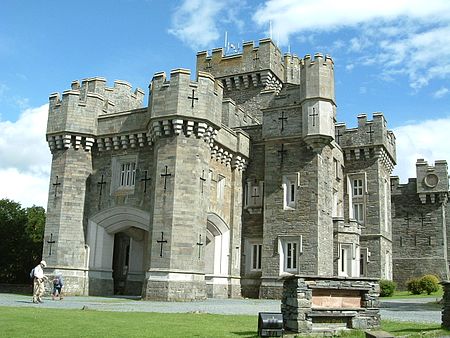Wray Castle
AC with 0 elementsBeatrix PotterBritish Merchant NavyCountry houses in CumbriaGothic Revival architecture in Cumbria ... and 6 more
Grade II* listed buildings in CumbriaMock castles in EnglandNational Trust properties in the Lake DistrictTourist attractions in CumbriaUse British English from December 2016Youth hostels in England and Wales

Wray Castle is a Victorian neo-gothic building at Claife in the English county of Cumbria. The house and grounds have belonged to the National Trust since 1929, and house has opened to the public on a regular basis since 2013. The grounds, which include part of the shoreline of Windermere, are open all year round and are renowned for their selection of specimen trees – Wellingtonia, redwood, Ginkgo biloba, weeping lime and varieties of beech. Between March and October, Windermere Lake Cruises operate a passenger boat service on Windermere from Ambleside and the Brockhole National Park Visitor Centre to Wray Castle.
Excerpt from the Wikipedia article Wray Castle (License: CC BY-SA 3.0, Authors, Images).Wray Castle
Garden Tree Trail, South Lakeland Claife
Geographical coordinates (GPS) Address Phone number Website External links Nearby Places Show on map
Geographical coordinates (GPS)
| Latitude | Longitude |
|---|---|
| N 54.4006345 ° | E -2.9641913 ° |
Address
Wray Castle
Garden Tree Trail
LA22 0JA South Lakeland, Claife
England, United Kingdom
Open on Google Maps










